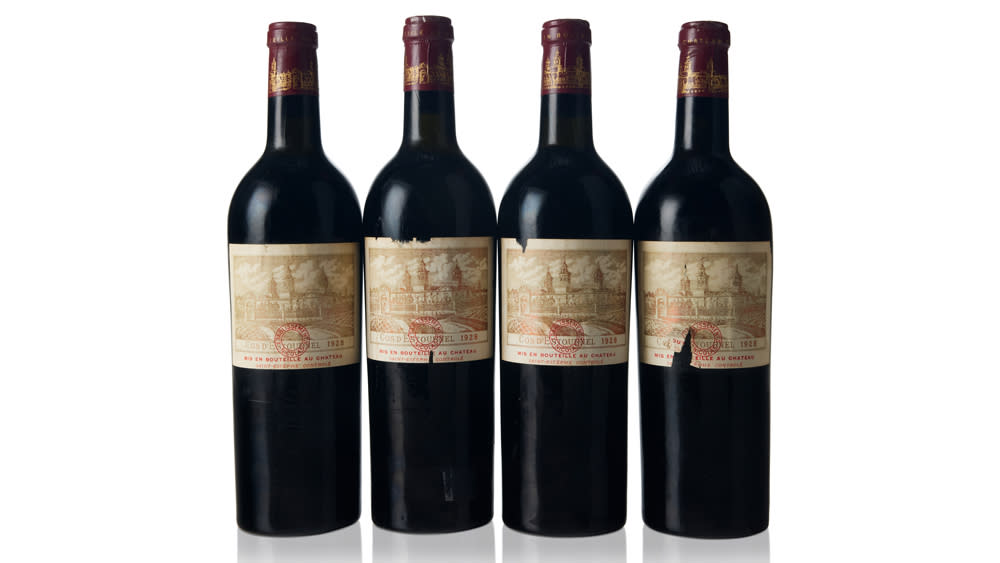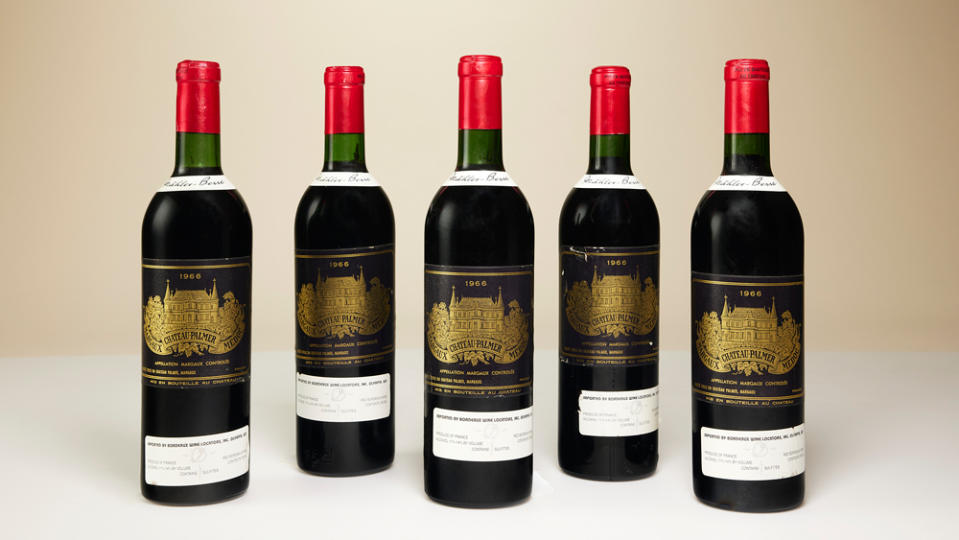The Risks of Big Wine Auctions: Why Caution Is Key

This story is from an installment of The Oeno Files, our weekly insider newsletter to the world of fine wine. Sign up here.
In addition to many holidays to celebrate, the final months of the year are also noted for two seemingly unrelated but interconnected events: End-of-year bonuses in the financial sector and end-of-year wine sales at major auction houses. We’ve read that bonuses are expected to be lower than usual for the second year in a row, and we’ve also heard from insiders in the auction world that prices may be lower than expected because the folks who’d normally snap up vintage Champagne and first-growth Bordeaux may not be as freewheeling as they have been in past years. That’s great news if you’re not dependent on that bonus to aid your cellar-filling shopping spree—and all the more reason to start scanning the auctions presented by Sotheby’s, Bonhams, Zachys, Christie’s, and other houses.
More from Robb Report
How to Know When to Drink, Hold, or Sell Your Most Prized Wines
This One-of-a-Kind Philippe Dufour Watch Could Fetch up to $3 Million at Auction
One specific auction has caught our eye this season. Christie’s has combined two distinct collections to present “Fine Wine from the Cellar of Quincy Jones & A Diplomat’s Collection of Rarities.” The sale, running November 30 through December 11, includes 350 lots from the legendary musician and an unnamed diplomat who has a treasure trove from France’s best regions. Among the marquee names on offer—such as Pétrus, Cheval Blanc, Cristal, Krug, and Domaine de la Romanée-Conti—is the opportunity to purchase wines from Jones’s collection that are nearly a century old. Christie’s will auction off Cos d’Estournel 1928, Latour 1933, and Leacock’s Malvazia from the same year (which is when Jones was born), and Mouton 1934.
While all in all this sounds like an incredible assortment of bottles, some of the offerings give us pause, especially many of the older ones. We have drunk extremely old vintages of very fine wine, and often the experience is sublime. Other times, though, the ravages of time have not been kind to the treasured juice inside the bottle. The thought of opening a bottle with 90 years of age on it reminds us of the time we saw another great jazz and blues performer, Ray Charles, in concert. This was in 2002, two years before he died. While we walked out of the theater very happy to have seen him on stage and we thought he put on a terrific show, we couldn’t help but wish that we had seen him years before, when he was in his prime.
As we’ve chatted with our friends across the wine world, we find we’re not alone in our hesitation, even when buying from a reputable source like a big auction house. “Bidding for wine at auction always has risk, particularly old bottles,” says Robin Kelley O’Connor, a wine educator who was a trade liaison between Bordeaux and the United States for more than 20 years. “As well trained the wine specialists are at the top auction houses, there is no guarantee that the wine or wines bid on and purchased are going to be sound when opened,” she says.

Yannick Benjamin, the winner of Michelin’s 2023 Sommelier Award in New York, has been present for many a collector’s moment of truth, and it’s not always pretty. “As a sommelier who has uncorked numerous bottles procured from auctions, I have encountered instances where wines, much to the chagrin of both myself and the collector, regrettably failed to live up to expectations,” he says. “The reality is that only a select few wines can withstand the test of time.”
A bottle’s failure to make it through the years may not be the wine’s fault. Blame may need to be apportioned to all the stops it made along the way from the winery to the auction block. It may have changed hands multiple times and perhaps one or more of the past owners stored the wines improperly. When we did a library tasting at Marqués de Riscal in Rioja last year, with 30 vintages dating back to 1862, we saw the benefit to bottles that had been cared for immaculately. We were amazed at the quality and consistency of the wines that were poured that day. They showed so well partly because the wines had never been moved and remained at a constant temperature until they were opened; they were stored in the cellar on the grounds of the winery where they were produced. Unfortunately, that consistency of care will not likely be the case with most bottles you find at auction.
And even with white-glove treatment throughout its life, a wine can still get long in the tooth and offer a less-than-ideal tasting experience. “What if that fine Champagne really smells just of old Parmesan rind and the wrong side of truffle?” London-based Master of Wine Anne Krebiehl told us. “What if that prized Burgundy is but a washed-out version of its former self, pale, brown, and more akin to a meager smoked meat broth?” Well, we can think of quite a few things we’d rather spend a few grand on other than meager smoked meat broth.
While you’ll never eliminate the risk of an old bottle not being great, the best thing to do is arm yourself with knowledge about the vintages you’re pursuing. For instance, the wines on offer in the Jones-diplomat Christie’s auction included some very old Bordeaux, so we checked with O’Connor for his guidance since he’s a foremost expert on the region. He sounded a note of caution. “The pre-war vintages pose a challenge of the wines being sound and drinkable,” he says. And while he points out that the “1928 Bordeaux was one of the great vintages of the 20th century,” he adds the caveat that the “1933 and 1934 were extremely challenging. The decade of the 1930’s truly did not produce a great vintage.”
Despite all the warnings of possible doom procuring old wine at auction, the juice is worth the squeeze. “You’re tasting a little bit of history,” says Will Lyons, The Sunday Times wine columnist. “What’s amazing with great wine is that it ages and develops in the bottle so you’re getting all these tertiary characteristics that you just don’t get in young wine.” And while Lyons sounds all the same alarms about the risks of old wine as our other colleagues have, he loves what time can do—to Bordeaux in particular. “The fruit completely mellows out and you get this completely raisin-y, almost nutty, caramelized character,” he says. “The texture can be gorgeous; it can be feather-light at that age.”
At Christie’s and other year-end auctions we’ve taken notice of, there seem to be a lot of bottles from more recent vintages that present opportunities to drink now or to add to one’s cellar and open in the near future. But with any bottle of wine, and especially one with a lot of years under its belt (or cork, as the case may be), it’s important to remember, as the Eagles sang in “Hotel California” many years ago, “This could be heaven, or this could be hell.” Or, as Krebiehl wrote to us, “You either pull or pop the cork to paradise or to pathetic anticlimax. Better have some bottles in reserve.”
Want more exclusive wine stories delivered to your inbox every Wednesday? Subscribe to our wine newsletter The Oeno Files today!
Best of Robb Report
Why a Heritage Turkey Is the Best Thanksgiving Bird—and How to Get One
The 10 Best Wines to Pair With Steak, From Cabernet to Malbec
Sign up for Robb Report's Newsletter. For the latest news, follow us on Facebook, Twitter, and Instagram.

